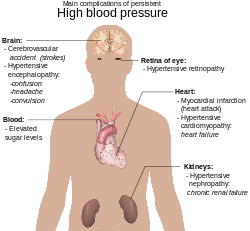Cardiology/ja: Difference between revisions
Created page with "=== 先天性心疾患 === {{Main/ja|Congenital heart defect/ja}}" |
No edit summary |
||
| (8 intermediate revisions by the same user not shown) | |||
| Line 30: | Line 30: | ||
}} | }} | ||
'''循環器学'''(''じゅんかんきがく'''、{{ety|grc|''καρδίᾱ'' (kardiā)|heart||-''λογία'' ([[wikt:-logia|-logia]])|study}})は、心臓に関する学問である。循環器学は、[[heart/ja|心臓]]および[[cardiovascular system/ja|心血管系]]の障害を扱う[[medicine/ja|医学]]の一分野である。この分野には、[[congenital heart defect/ja|先天性心疾患]]、[[coronary artery disease/ja|冠動脈疾患]]、[[heart failure/ja|心不全]]、[[valvular heart disease/ja|心臓弁膜症]]、[[electrophysiology/ja|電気生理学]]の[[medical diagnosis/ja|診断]]と治療が含まれる。この分野を専門とする[[physician/ja|医師]]は'''循環器専門医'''と呼ばれ、[[internal medicine/ja|内科]]の一分野である。小児循環器専門医は循環器学を専門とする[[pediatrician/ja|小児科医]]である。心臓外科を専門とする医師は'''[[cardiothoracic surgeon/ja|心臓胸部外科医]]'''または'''心臓外科医'''と呼ばれ、[[general surgery/ja|一般外科]]の専門分野である。 | '''循環器学'''('''じゅんかんきがく'''、{{ety|grc|''καρδίᾱ'' (kardiā)|heart||-''λογία'' ([[wikt:-logia|-logia]])|study}})は、心臓に関する学問である。循環器学は、[[heart/ja|心臓]]および[[cardiovascular system/ja|心血管系]]の障害を扱う[[medicine/ja|医学]]の一分野である。この分野には、[[congenital heart defect/ja|先天性心疾患]]、[[coronary artery disease/ja|冠動脈疾患]]、[[heart failure/ja|心不全]]、[[valvular heart disease/ja|心臓弁膜症]]、[[electrophysiology/ja|電気生理学]]の[[medical diagnosis/ja|診断]]と治療が含まれる。この分野を専門とする[[physician/ja|医師]]は'''循環器専門医'''と呼ばれ、[[internal medicine/ja|内科]]の一分野である。小児循環器専門医は循環器学を専門とする[[pediatrician/ja|小児科医]]である。心臓外科を専門とする医師は'''[[cardiothoracic surgeon/ja|心臓胸部外科医]]'''または'''心臓外科医'''と呼ばれ、[[general surgery/ja|一般外科]]の専門分野である。 | ||
== 専門分野 == | == 専門分野 == | ||
| Line 236: | Line 236: | ||
{{Main/ja|Congenital heart defect/ja}} | {{Main/ja|Congenital heart defect/ja}} | ||
先天性心疾患は、「先天性心異常」または「先天性心疾患」とも呼ばれ、[[childbirth/ja|出生]]時に存在する心臓の構造の問題である。徴候と症状は、問題の特定のタイプによって異なる。症状は、全くないものから生命を脅かすものまで様々である。症状がある場合は、呼吸の速さ、[[cyanosis/ja|青みがかった皮膚]]、体重増加不良、疲労感などがある。胸痛を起こすことはない。ほとんどの先天性心疾患は、他の疾患と併発することはない。心臓の欠陥に起因する合併症には、[[heart failure/ja|心不全]]がある。 | |||
<!-- Cause and diagnosis--> | <!-- Cause and diagnosis--> | ||
先天性心疾患の原因は不明であることが多い。[[rubella/ja|風疹]]などの[[pregnancy/ja|妊娠中]]の感染症、[[ethanol/ja|アルコール]]や[[tobacco/ja|タバコ]]などの特定の薬物や薬物の使用、両親が近親であること、母親の栄養状態が悪いか[[obesity/ja|肥満]]が原因である場合もある。親が先天性心疾患であることも危険因子である。[[Down syndrome/ja|ダウン症候群]]、[[turner syndrome/ja|ターナー症候群]]、[[Marfan syndrome/ja|マルファン症候群]]など、多くの遺伝的疾患が心臓欠損と関連している。先天性心疾患は、青みがかった色になる可能性があるかどうかによって、[[cyanotic heart defect/ja|チアノーゼ性心疾患]]と[[non-cyanotic heart defect/ja|非チアノーゼ性心疾患]]の2つの主なグループに分けられる。問題は、心臓の内壁、[[heart valves/ja|心臓弁]]、または心臓を出入りする太い血管に関わることがある。 | |||
<!-- Prevention and treatment --> | <!-- Prevention and treatment --> | ||
先天性心疾患は、[[rubella vaccination/ja|風疹の予防接種]]、食塩への[[iodine/ja|ヨウ素]]の添加、特定の食品への[[folic acid/ja|葉酸]]の添加によって部分的に予防可能である。治療の必要のない欠陥もある。その他は[[catheter procedure/ja|カテーテルを用いた治療]]や[[cardiac surgery/ja|心臓手術]]で効果的に治療できる場合がある。時には多くの手術が必要になることもある。時には[[heart transplantation/ja|心臓移植]]が必要となる。適切な治療を行えば、複雑な問題であっても、一般的に予後は良好である。 | |||
<!-- Epidemiology and prognosis --> | <!-- Epidemiology and prognosis --> | ||
心臓欠損症は最も一般的な[[birth defect/ja|先天性]]欠損症である。2013年には、世界中で3,430万人に見られた。診断方法にもよるが、出生1,000人あたり4~75人が罹患している。1,000人あたり約6~19人が中等度から重度の問題を引き起こしている。先天性心疾患は、先天性疾患に関連した死亡の主な原因である。2013年には323,000人が死亡し、1990年の366,000人から減少した。 | |||
==== ファロー四徴症==== | |||
= | [[Tetralogy of Fallot/ja|ファロー四徴症]]は、出生1,000人あたり1~3例で発生する最も一般的な先天性心疾患である。この欠陥の原因は[[ventricular septal defect/ja|心室中隔欠損症]](VSD)と[[overriding aorta/ja|オーバーライド大動脈]]である。この2つの欠陥が組み合わさることで、脱酸素された血液が肺を迂回して循環系に戻る。通常、[[modified Blalock-Taussig shunt/ja|修正ブラロック-タウシッグシャント]]が循環の固定に用いられる。この方法は、鎖骨下動脈と同側の肺動脈の間に移植片を設置し、正しい血流を回復させることによって行われる。 | ||
[[Tetralogy of Fallot]] | |||
==== 肺閉鎖症==== | |||
= | [[Pulmonary atresia/ja|肺閉鎖症]]は出生10万人に7~8人の割合で起こり、大動脈が右心室から枝分かれしているのが特徴である。このため、脱酸素化された血液が肺を迂回して循環系に入る。手術により、大動脈の向きを変え、右心室と肺動脈の接続を固定することで、これを治すことができる。 | ||
[[Pulmonary atresia]] | |||
肺閉鎖症には2つのタイプがあり、赤ちゃんが[[ventricular septal defect/ja|心室中隔欠損]]も持っているかどうかで分類される。 | |||
* 無傷の心室中隔を伴う肺閉鎖症:このタイプの肺閉鎖症は、心室間の[[septum/ja|中隔]]が完全で無傷である。 | |||
* | * 心室中隔欠損を伴う肺閉鎖症: このタイプの肺閉鎖症は、心室中隔欠損によって血液が右心室へ流入したり右心室から流出したりすることで起こる。 | ||
* | |||
==== 二重出口右心室 ==== | |||
= | [[Double outlet right ventricle/ja|二重出口右室]](DORV)とは、肺動脈と大動脈の両方の大動脈が右室につながっている状態である。通常、DORVのバリエーションに応じて、さまざまな特定の場所にVSDがあり、通常50%は大動脈下、30%は大動脈下である。この欠損を治すために行われる手術は、欠損した心臓の生理学的性質や血流の違いにより様々である。一つはVSDを閉鎖し、左心室と大動脈、右心室と肺動脈の間の血流を再開させる導管を設置する方法である。もう1つの方法は、[[Pulmonic stenosis/ja|肺動脈狭窄症]]を合併している場合に全身-肺動脈シャントを行うことである。また、[[Atrial septostomy/ja|バルーン心房中隔吻合術]]は、外科的矯正を待つ間、タウジッヒ・ビング異常のDORVによる低酸素血症を緩和するために行うことができる。 | ||
[[Double outlet right ventricle]] | |||
==== 大動脈転位症 ==== | ==== 大動脈転位症 ==== | ||
Latest revision as of 21:04, 5 March 2024
 人間の心臓の血流図。青色成分は脱酸素血液経路を、赤色成分は酸素血液経路を示す。 | |
| System | 循環器 |
|---|---|
| Subdivisions |
|
| Significant diseases | |
| Significant tests | 血液検査、電気生理学的検査, cardiac imaging/ja, ECG/ja, echocardiogram/ja, ストレス検査 |
| Specialist | 心臓専門医(Cardiologist) |
| Glossary | Glossary of medicine/ja |
| Occupation | |
|---|---|
| Names |
|
Occupation type | 専門分野 |
Activity sectors | 医学, Surgery/ja |
| Description | |
Education required |
|
Fields of employment | Hospital/ja, Clinic/ja |
循環器学(じゅんかんきがく、from Ancient Greek καρδίᾱ (kardiā) 'heart', and -λογία (-logia) 'study')は、心臓に関する学問である。循環器学は、心臓および心血管系の障害を扱う医学の一分野である。この分野には、先天性心疾患、冠動脈疾患、心不全、心臓弁膜症、電気生理学の診断と治療が含まれる。この分野を専門とする医師は循環器専門医と呼ばれ、内科の一分野である。小児循環器専門医は循環器学を専門とする小児科医である。心臓外科を専門とする医師は心臓胸部外科医または心臓外科医と呼ばれ、一般外科の専門分野である。
専門分野
循環器専門医はすべて心臓の疾患を研究しているが、成人の心臓疾患と小児の心臓疾患では、それぞれ異なる訓練経路が必要である。したがって、成人の循環器専門医(単に「循環器専門医」と呼ばれることが多い)は、小児を診る訓練を受けておらず、小児循環器専門医は成人の心臓病を診る訓練を受けていない。心臓リズム装置植え込み以外の外科的側面は循環器内科には含まれず、心臓胸部外科の領域である。例えば、冠動脈バイパス術(CABG)、心肺バイパス術、弁置換術は循環器専門医ではなく外科医が行う外科的処置である。しかし、心臓カテーテル検査やペースメーカー植え込み術などの侵襲的手技の一部は循環器専門医が行う。
成人心臓病学
循環器内科は内科の専門分野である。
アメリカで循環器専門医になるには、3年間の内科レジデントの後、3年間の循環器科フェローシップを受ける。さらにサブスペシャリティに特化することも可能である。米国で卒後医学教育認定評議会によって認定されているサブスペシャリティは、心臓電気生理学、心エコー図法、インターベンショナル・カーディオロジー、心臓核医学である。アメリカにおけるアメリカオステオパシー協会オステオパシー専門医局の認定するサブスペシャリティには、臨床心臓電気生理学とインターベンショナル心臓学がある。
インドでは、M.B.B.S.の後に一般内科または小児科で3年間のレジデンシーを行い、その後循環器内科で3年間のレジデンシーを行うことが、循環器内科のD.M.(医学博士号[D.M.])/ナショナル・ボード会員 (DNB)となるために必要である。
Doximityによると、成人の心臓専門医の平均年収は436,849ドルである。
心臓電気生理学
心臓電気生理学は、心臓の電気的活動を解明し、診断し、治療する科学である。この用語は通常、侵襲的(心臓内)カテーテルによる自発活動およびプログラム電気刺激(PES)に対する心臓反応の記録によるこのような現象の研究を表すのに用いられる。これらの検査は、複雑な不整脈の評価、症状の解明、異常な心電図の評価、将来不整脈を発症するリスクの評価、および治療の設計のために行われる。 これらの手技には、診断や予後の手技に加えて、治療法(典型的にはラジオ波アブレーションや冷凍アブレーション)が含まれるようになってきている。
この分野で採用されている他の治療法には、抗不整脈薬療法、ペースメーカーや自動植え込み型除細動器(AICD)の植え込みなどがある。
心臓の電気生理学的研究は,一般的に,特定の薬理学的レジメンによるPESに対する傷害心筋または心筋症心筋の反応を測定し,そのレジメンが将来,致命的となりうる持続性心室頻拍(VT)または心室細動(VF)をうまく予防できる可能性を評価するために行われる。循環器専門医がPES後のVTまたはVFの発症を最もよく予防または遅らせる長期治療レジメンを選択できるようにするためには,電気生理学的研究による薬剤の一連の試験を実施しなければならないこともある。このような試験は,心臓ペースメーカーやAICDが新たに植え込まれたり,交換されたりした場合にも行われる。
臨床心臓電気生理学
臨床心臓電気生理学とは、循環器学の一分野であり、心臓のリズム障害の研究と治療に関するものである。この分野を専門とする心臓専門医は通常、電気生理学者と呼ばれる。電気生理学者は、心臓の電気的活動のメカニズム、機能、性能について訓練を受けている。電気生理学者は、他の心臓専門医や心臓外科医と密接に協力し、心臓のリズム障害(不整脈)に対する治療を支援または指導する。心臓不整脈を治療するためのインターベンションや外科的手技を行う訓練も受けている。
電気生理学者になるために必要なトレーニングは長く、医学部卒業後8年間を要する(米国内)。3年間の内科レジデント、3年間の循環器内科フェローシップ、そして2年間の臨床心臓電気生理学である。
循環器老年医学
心臓病学(老年心臓病学)は、高齢者の心臓血管障害を扱う心臓病学および老年医学の一分野である。
心筋梗塞、心不全、心筋症、心房細動などの不整脈を含む冠動脈性心疾患などの心臓疾患は一般的であり、高齢者の死亡の主な原因となっている。アテローム性動脈硬化症や末梢動脈疾患などの血管障害は、高齢者において重大な罹患率と死亡率を引き起こす。
画像
心臓画像診断には、心エコー法、心臓磁気共鳴画像法(CMR)、心臓 コンピュータ断層撮影法などがある。 心臓画像診断の専門医は、すべての画像モダリティについてより多くの訓練を受けることもあれば、単一の画像モダリティに集中することもある。
心エコー(または "エコー")は、標準的な二次元、三次元、ドップラー超音波を用いて心臓の画像を作成する。 エコーを専門とする者は、臨床時間のかなりの部分をエコーの読影と経食道エコーの実施に費やすことがあり、特に後者は左心房付属器閉塞装置の挿入などの手技の際に使用する。
心臓MRIは、ヘモクロマトーシスやアミロイドーシスなどの特定の疾患に対して、特定のシーケンスで心臓の構造と機能を画像化するための特別なプロトコルを利用する。
心臓CTは、冠動脈に特に重点を置いて心臓の構造と機能を画像化するための特別なプロトコルを使用する。
インターベンショナル循環器学
インターベンショナル循環器学は循環器学の一分野であり、特にカテーテルを用いた心臓構造疾患の治療を扱う。血管造影、血管形成術、アテレクトミー、ステント留置術など、カテーテル治療によって心臓に多くの手技を施すことができる。これらの手技はすべて、大腿動脈または橈骨動脈(ただし、実際には太い末梢動脈または静脈であれば何でもよい)にシースを挿入し、X-ray可視化(最も一般的なのは透視である)のもとで心臓にカニューレ留置する。このカニューレ挿入により、外科的開胸による外傷を回避して心臓に間接的にアクセスすることができる。
インターベンショナル循環器学や放射線学的アプローチを用いる主な利点は、傷跡や痛みを避けることができ、術後の回復が長いことである。さらに,一次血管形成術の心臓インターベンショナル手技は,現在では急性心筋梗塞の治療のゴールドスタンダードとなっている。この手技は、アテローム性動脈硬化症によって血管系が閉塞した場合に、予防的に行うこともできる。心臓専門医はこのシースを血管系に通して心臓にアクセスする。このシースにはバルーンと小さな金網のチューブが巻き付けられており、循環器専門医が閉塞や狭窄を発見した場合、血管系の閉塞部位でバルーンを膨らませてプラークを血管壁に対して平らにしたり圧迫したりすることができる。それが完了すると、ステントが一種の足場として設置され、血管系を永久的に開通させる。
心筋症/心不全
循環器学の中で比較的新しい専門分野は心不全と心臓移植である。一般的な循環器内科を心筋症だけに特化することは、心臓移植や肺高血圧症も専門にすることにつながる。心筋症は心筋の病気で、心筋が炎症を起こして厚くなる。
心臓腫瘍学
循環器学の最近の専門分野は心臓腫瘍学である。 この分野は、がん患者、特に化学療法を計画している患者、または化学療法による心臓合併症を経験した患者の心臓管理を専門としている。
予防心臓学と心臓リハビリテーション
近年、心血管疾患の早期発症による負担が増加しているため、予防循環器学に徐々に焦点が移りつつある。WHOによると、全早期死亡の37%は心血管疾患によるものであり、そのうち82%は中低所得国である。臨床循環器学は、予防循環器学と心臓リハビリテーションを扱う循環器学の下位専門分野である。予防循環器学は、非侵襲的検査、具体的には心電図検査、ファセグラフィー、ストレス検査、脂質プロファイル、一般的な身体検査などによる定期的な予防検診を行い、心血管疾患を早期に発見する。予防心臓学の下位専門分野はスポーツ心臓学である。心臓病は米国を含む世界の主要な死因であるため(cdc.gov)、心臓の健康を改善するための国民的な健康キャンペーンやランダム化比較研究が発展してきた。
小児循環器学

ヘレン・B・タウシッグは小児循環器学の創始者として知られる。彼女は、大動脈の真下にある心室中隔欠損(VSD)から酸素化血液と脱酸素化血液が循環系に入り込む先天性心疾患であるファロー四徴症の研究で有名になった。この状態により、新生児は青みを帯びたチアノーゼを呈し、組織への酸素が欠乏する低酸素血症となる。彼女は、ジョンズ・ホプキンス病院でアルフレッド・ブラロックとヴィヴィアン・トーマスと一緒に働き、この「青い赤ちゃん」を外科的に治す方法を調べるために犬を使った実験を行った。彼らは最終的に、全身動脈を肺動脈に吻合することでそれを行う方法を発見し、これをブラロック・タウシッグ・シャントと呼んだ。
ファロー四徴症、肺閉鎖症、二重出口右心室、大動脈転位、持続性動脈管開存症、エブシュタイン異常症などは、心臓の欠陥のために新生児の血液が効率的に酸素化されない様々な先天性チアノーゼ性心疾患である。
成人先天性心疾患
より多くの先天性心疾患を持つ小児が成人期まで生存するようになったため、成人先天性心疾患(ACHD)と呼ばれる成人および小児循環器学のハイブリッドが出現した。 この分野は成人循環器科と小児循環器科のどちらにも入ることができる。 ACHDは成人疾患(冠動脈疾患,COPD,糖尿病など)に伴う先天性疾患を専門としており,それ以外の成人または小児心臓病学としては非典型的である。
心臓

循環器学の中心的存在である心臓には、数多くの解剖学的特徴(例えば、心房、心室、心臓弁)と生理学的特徴(例えば、収縮期、心音、後負荷)があり、何世紀にもわたって百科事典的に記録されてきた。心臓は腹部の中央に位置し、その先端は腹部のやや左側にある。
心臓の障害は心臓病や心血管系疾患につながり、かなりの数の死亡につながる。心血管系疾患はアメリカにおける主要な死因であり、2008年の総死亡数の24.95%を占めている。
心臓の主な役割は、全身に血液を送り出すことである。 心臓は、全身循環と呼ばれる体内の血液を肺に送り込み、肺循環と呼ばれる肺を通って再び体外に送り出す。 つまり、心臓は全身とつながっており、全身に影響を及ぼしているのである。簡単に言えば、心臓は循環の回路のひとつである。健康な心臓については多くのことが知られているが、循環器学の研究の大部分は、心臓の障害と、可能であれば機能の回復である。
心臓は血液を絞り出す筋肉であり、ポンプのように機能する。心臓のシステムは電気的なものと機械的なものに分類され、どちらも故障や機能障害を起こしやすい。
心臓の電気システムは、洞房結節にある心臓ペースメーカーによる筋肉細胞の周期的な収縮(収縮)が中心である。 電気的側面の研究は心臓電気生理学と呼ばれる電気生理学の下位分野であり、心電図(ECG/EKG)に代表される。 ペースメーカーで発生した活動電位は特定のパターンで心臓全体に伝播する。この電位を伝えるシステムは心臓の電気伝導系|電気伝導系と呼ばれる。 電気系の機能不全はさまざまな形で現れ、ウォルフ・パーキンソン・ホワイト症候群、心室細動、心ブロックなどがある。
心臓の機械的システムは、血液の流体運動と、ポンプとしての心臓の機能性を中心としている。 機械的な部分は最終的に心臓の目的であり、心臓の障害の多くは血液を動かす能力を破壊する。 心不全は、心臓の機械的特性が破綻している、または破綻しつつある状態の1つであり、これは血液が十分に循環していないことを意味する。十分な量の血液を全身に送ることができないと、他の臓器の損傷や不全を引き起こし、重症になると死に至ることもある。
冠状動脈循環
冠動脈循環とは、心筋(心筋)の血管における血液の循環である。心筋に酸素を豊富に含む血液を送る血管は冠動脈として知られている。心筋から脱酸素血液を除去する血管は心臓静脈として知られている。これらには大心静脈、中心静脈、小心静脈、前心静脈が含まれる。
左右の冠動脈は心臓の表面を走っているので、心外膜冠動脈と呼ぶことができる。これらの動脈は、健康であれば、冠動脈の血流を心筋の必要量に適したレベルに維持するための自己調節が可能である。これらの比較的細い血管は一般的にアテローム性動脈硬化症の影響を受け、閉塞して狭心症や心筋梗塞(別名心臓発作)を引き起こすことがある。心筋の深部を走る冠動脈は心内膜下動脈と呼ばれる。
冠状動脈は「終末循環」として分類されており、これは心筋への血液供給の唯一の源であるためである。冠状動脈にはほとんど冗長な血液供給がないため、これらの血管が閉塞されると非常に重大な状態になる可能性がある。
心臓検査
心臓検査(「心臓前胸部検査」とも呼ばれる)は、身体検査の一環として、あるいは患者が心血管系の病理を示唆する胸痛を呈した場合に行われる。一般的には適応症によって変更され、他の検査、特に呼吸器検査と統合される。
すべての健康診断と同様、心臓の検査も、検査、触診、聴診という標準的な構成に従って行われる。
心臓疾患
循環器学は、心臓の正常な機能と健康な心臓からの逸脱に関わる学問である。多くの疾患は心臓そのものに関わるが、心臓以外の血管系に関わるものもある。この2つを総称して心臓血管系と呼び、一方の疾患は他方の疾患にも影響を及ぼす傾向がある。
冠動脈疾患
冠動脈疾患は「虚血性心疾患」としても知られ、以下のような疾患群である: 安定狭心症、不安定狭心症、心筋梗塞が含まれ、心臓突然死の原因の一つである。狭心症は心血管疾患の中で最も一般的なタイプである。一般的な症状は胸痛または肩、腕、背中、首、顎に及ぶ不快感である。時には胸やけのように感じることもある。通常、症状は運動や感情的なストレスで起こり、数分以内で持続し、休息によってよくなる。息切れが起こることもあり、症状がないこともある。最初の徴候は時に心臓発作である。その他の合併症としては、心不全や不規則心拍がある。
危険因子には以下のようなものがある: 高血圧、喫煙、糖尿病、運動不足、肥満、高血中コレステロール血症、食生活の乱れ、過度のアルコールなどである。その他のリスクとしてはうつ病がある。根本的な機序には、心臓の動脈のアテローム性動脈硬化症が関与している。心電図、心臓負荷試験、冠動脈コンピュータ断層撮影、冠動脈造影など、多くの検査が診断に役立つ。
予防には、健康的な食事、定期的な運動、健康的な体重の維持、禁煙が必要である。糖尿病、高コレステロール、高血圧の治療薬を使用することもある。リスクが低く、症状のない人をスクリーニングする根拠は限られている。治療には予防と同様の対策が必要である。アスピリンを含む抗血小板薬、β遮断薬、またはニトログリセリンなどの追加の薬物療法が勧められることがある。重症の場合は、経皮的冠動脈インターベンション(PCI)や冠動脈バイパス術(CABG)などの手技が用いられる。安定したCAD患者では、他の治療に加えてPCIまたはCABGを行うことで生命予後が改善するか、または心臓発作リスクが低下するかは不明である。
2013年、CADは世界的に最も一般的な死因となり、1990年の574万人(12%)から814万人(16.8%)が死亡した。1980年から2010年にかけて、特に先進国において、ある年齢におけるCADによる死亡リスクは減少している。ある年齢におけるCADの症例数も1990年から2010年にかけて減少している。2010年の米国では、65歳以上の約20%がCADであったが、45~64歳では7%、18~45歳では1.3%であった。ある年齢では、女性よりも男性の方が高い。
心筋症
心不全(正式には心筋症)とは心臓の機能が低下することで、心不全には数多くの原因や病型がある。
心臓不整脈
心臓不整脈は、「心臓不整脈」または「不整脈」とも呼ばれ、心拍が速すぎる、遅すぎる、またはそのリズムが不規則である一群の病態である。速すぎる心拍数-成人では1分間に100拍以上-は頻脈と呼ばれる。心拍数が遅すぎる-毎分60拍以下-のは徐脈と呼ばれる。不整脈の多くは症状を示さない。症状がある場合は、動悸、または心拍と心拍の間に間を感じることがある。より重篤な症状としては、ふらつき、失神、息切れ、または胸痛がある。ほとんどの種類の不整脈は重篤ではないが、脳卒中や心不全などの合併症を引き起こしやすいものもある。また、心停止に至るものもある。
不整脈には主に4つのタイプがある:期外収縮、上室性頻拍、心室性不整脈、徐脈性不整脈である。期外拍動には、心房早期収縮、心室早期収縮、早期接合部収縮が含まれる。上室性頻拍には、心房細動、心房粗動、および発作性上室性頻拍が含まれる。心室性不整脈には、心室細動および心室頻拍が含まれる。不整脈は心臓の電気伝導系の問題によるものである。不整脈は小児にも起こることがある;しかしながら、心拍数の正常範囲は異なり、年齢によって異なる。心電図やホルターモニターなど、多くの検査が不整脈の診断に役立つ。
ほとんどの不整脈は効果的に治療できる。治療には、薬物療法、ペースメーカーなどの医療処置、手術などがある。心拍数が速い場合の薬物療法には、β遮断薬やプロカインアミドなどの正常な心拍に戻そうとする薬がある。この後のグループは、特に長期間服用した場合、より重大な副作用を起こす可能性がある。不整脈のある人は、合併症のリスクを減らすためにしばしば血液サラサラ薬で治療される。不整脈による症状がひどい場合は、カーディオバージョンまたはデフリブリレーションという形で電気を流す緊急治療を受けることがある。
不整脈は何百万人もの人々に影響を及ぼしている。ヨーロッパと北米では、2014年現在、心房細動は人口の約2%から3%に影響を及ぼしている。心房細動と心房粗動は、1990年の29,000人から2013年には112,000人の死亡をもたらした。心臓突然死は、心血管疾患による死亡の約半数、または世界全体の死亡の約15%の原因である。心臓突然死の約80%は心室性不整脈の結果である。不整脈は年齢に関係なく起こるが、高齢者に多い。
心停止
心停止とは、心臓が効果的に収縮しないために、効果的な血流が突然停止することである。症状には、意識消失や呼吸の異常または欠如が含まれる。これが起こる前に胸痛、息切れ、吐き気がある人もいる。数分以内に治療しなければ、通常は死亡する。
心停止の最も一般的な原因は冠動脈疾患である。一般的ではない原因としては、大出血、酸素不足、超低カリウム血症、心不全、激しい運動などがある。また、QT延長症候群を含む多くの遺伝性疾患もリスクを高める可能性がある。初期心拍は心室細動であることが多い。診断は脈がないことで確定される。心停止は心臓発作または心不全によって引き起こされることがあるが、これらは同じではない。
予防には禁煙、身体活動、健康的な体重の維持が含まれる。心停止に対する治療は、直ちに心肺蘇生法(CPR)を行い、ショック可能なリズムが存在する場合は除細動を行う。生き延びた人の中で標的体温管理が転帰を改善する可能性がある。再発による死亡の可能性を減らすために植え込み型心臓除細動器を設置することもある。
米国では、病院外での心停止は年間1万人あたり約13人(326,000例)に起こる。病院内での心停止はさらに209,000例に起こる。 心停止は年齢とともに多くなる。心停止は女性よりも男性に多くみられる。治療によって生存する人の割合は約8%である。助かった人の多くは重大な障害を負っている。しかし、米国の多くのテレビ番組では、67%という非現実的な高い生存率が描かれている。
高血圧
"高血圧"としても知られる高血圧症は、長期である。動脈の血圧が持続的に上昇する医学的状態である。高血圧は通常、症状を引き起こさない。しかし、長期にわたる高血圧は、冠動脈疾患、脳卒中、心不全、末梢血管疾患、視力低下、および慢性腎臓病の主要な危険因子である。
生活習慣因子は高血圧のリスクを高める可能性がある。これには、過剰な食塩、過剰な体重、喫煙、アルコール摂取などが含まれる。高血圧はまた、他の疾患によって引き起こされたり、薬剤の副作用として起こることもある。
血圧は2つの測定値、収縮期圧と拡張期圧で表され、それぞれ最大圧と最小圧である。安静時の正常血圧は収縮期100~140ミリメートル水銀(mmHg)、拡張期60~90mmHgの範囲内である。ほとんどの成人では、安静時血圧が140/90mmHg以上が持続する場合に高血圧となる。小児には異なる数値が適用される。高血圧を診断する場合、24時間にわたる外来血圧測定は、医師の診察室やその他の血圧スクリーニングの場所での"診察室での"血圧測定よりも正確であるように思われる。
生活習慣の改善と薬物療法は、血圧を下げ、健康合併症のリスクを減らすことができる。生活習慣の改善には、減量、塩分摂取量の減少、身体運動、健康的な食事が含まれる。生活様式の変更が不十分な場合は、血圧治療薬を使用する。最大3種類の薬物療法により、90%の人の血圧が効果的にコントロールされる。中等度から重度の高血圧(160/100mmHg以上と定義される)に対する薬物療法は、生命予後の改善と罹患率の減少と関連している。140/90 mmHgから160/100 mmHgの間の血圧に対する治療の効果はあまり明らかではなく、有益性を見出した研究もあればそうでない研究もある。高血圧は世界人口の16%から37%が罹患している。2010年には、高血圧が18%(940万人)の死亡の要因になったと考えられている。
本態性高血圧と二次性高血圧
本態性高血圧は高血圧の一種であり、定義上、原因が特定できない。本態性高血圧は最も一般的なタイプの高血圧であり、高血圧患者の95%が罹患しており、家族性の傾向があり、環境と遺伝因子の相互作用の結果である可能性が高い。本態性高血圧の有病率は年齢とともに増加し、若い年齢で比較的血圧が高い人は、その後の高血圧発症のリスクが高い。 高血圧は大脳、心臓、腎イベントのリスクを増加させる。
二次性高血圧は、高血圧の一種であり、同定可能な根本的な二次的原因によって引き起こされる。本態性高血圧よりもはるかに一般的ではなく、高血圧患者のわずか5%しか罹患していない。内分泌疾患、腎疾患、腫瘍など多くの異なる原因がある。また、多くの薬の副作用であることもある。
高血圧の合併症

高血圧の合併症とは、持続的な血圧上昇に起因する臨床的転帰のことである。高血圧はアテローム性動脈硬化症のすべての臨床症状の危険因子である。高血圧は心不全、冠動脈疾患、脳卒中、腎疾患、末梢動脈疾患の独立した素因である。先進国における心血管系の罹患率および死亡率の最も重要な危険因子である。
先天性心疾患
先天性心疾患は、「先天性心異常」または「先天性心疾患」とも呼ばれ、出生時に存在する心臓の構造の問題である。徴候と症状は、問題の特定のタイプによって異なる。症状は、全くないものから生命を脅かすものまで様々である。症状がある場合は、呼吸の速さ、青みがかった皮膚、体重増加不良、疲労感などがある。胸痛を起こすことはない。ほとんどの先天性心疾患は、他の疾患と併発することはない。心臓の欠陥に起因する合併症には、心不全がある。
先天性心疾患の原因は不明であることが多い。風疹などの妊娠中の感染症、アルコールやタバコなどの特定の薬物や薬物の使用、両親が近親であること、母親の栄養状態が悪いか肥満が原因である場合もある。親が先天性心疾患であることも危険因子である。ダウン症候群、ターナー症候群、マルファン症候群など、多くの遺伝的疾患が心臓欠損と関連している。先天性心疾患は、青みがかった色になる可能性があるかどうかによって、チアノーゼ性心疾患と非チアノーゼ性心疾患の2つの主なグループに分けられる。問題は、心臓の内壁、心臓弁、または心臓を出入りする太い血管に関わることがある。
先天性心疾患は、風疹の予防接種、食塩へのヨウ素の添加、特定の食品への葉酸の添加によって部分的に予防可能である。治療の必要のない欠陥もある。その他はカテーテルを用いた治療や心臓手術で効果的に治療できる場合がある。時には多くの手術が必要になることもある。時には心臓移植が必要となる。適切な治療を行えば、複雑な問題であっても、一般的に予後は良好である。
心臓欠損症は最も一般的な先天性欠損症である。2013年には、世界中で3,430万人に見られた。診断方法にもよるが、出生1,000人あたり4~75人が罹患している。1,000人あたり約6~19人が中等度から重度の問題を引き起こしている。先天性心疾患は、先天性疾患に関連した死亡の主な原因である。2013年には323,000人が死亡し、1990年の366,000人から減少した。
ファロー四徴症
ファロー四徴症は、出生1,000人あたり1~3例で発生する最も一般的な先天性心疾患である。この欠陥の原因は心室中隔欠損症(VSD)とオーバーライド大動脈である。この2つの欠陥が組み合わさることで、脱酸素された血液が肺を迂回して循環系に戻る。通常、修正ブラロック-タウシッグシャントが循環の固定に用いられる。この方法は、鎖骨下動脈と同側の肺動脈の間に移植片を設置し、正しい血流を回復させることによって行われる。
肺閉鎖症
肺閉鎖症は出生10万人に7~8人の割合で起こり、大動脈が右心室から枝分かれしているのが特徴である。このため、脱酸素化された血液が肺を迂回して循環系に入る。手術により、大動脈の向きを変え、右心室と肺動脈の接続を固定することで、これを治すことができる。
肺閉鎖症には2つのタイプがあり、赤ちゃんが心室中隔欠損も持っているかどうかで分類される。
- 無傷の心室中隔を伴う肺閉鎖症:このタイプの肺閉鎖症は、心室間の中隔が完全で無傷である。
- 心室中隔欠損を伴う肺閉鎖症: このタイプの肺閉鎖症は、心室中隔欠損によって血液が右心室へ流入したり右心室から流出したりすることで起こる。
二重出口右心室
二重出口右室(DORV)とは、肺動脈と大動脈の両方の大動脈が右室につながっている状態である。通常、DORVのバリエーションに応じて、さまざまな特定の場所にVSDがあり、通常50%は大動脈下、30%は大動脈下である。この欠損を治すために行われる手術は、欠損した心臓の生理学的性質や血流の違いにより様々である。一つはVSDを閉鎖し、左心室と大動脈、右心室と肺動脈の間の血流を再開させる導管を設置する方法である。もう1つの方法は、肺動脈狭窄症を合併している場合に全身-肺動脈シャントを行うことである。また、バルーン心房中隔吻合術は、外科的矯正を待つ間、タウジッヒ・ビング異常のDORVによる低酸素血症を緩和するために行うことができる。
大動脈転位症

大動脈転位には、心室と血管がつながっている場所によって、大動脈デキストロ転位と大動脈レボ転位の2種類がある。レボ転位は新生児の約4,000人に1人の割合で起こり、右心室が大動脈に血液を送り込み、脱酸素化された血液が血流に入ることである。一時的な処置としては、心房中隔欠損を形成することである。永久固定術はより複雑で、肺還流を右心房に、全身還流を左心房に方向転換する必要があり、これはSenning法として知られている。左室流出を迂回させ、肺動脈を分割し、右室と肺動脈の間に導管を設置するRastelli法も可能である。レボ転位は新生児の約13,000人に1人の割合で起こり、左心室が肺に血液を送り込み、右心室が大動脈に血液を送り込むという特徴がある。左心室は肺に血液を送り、右心室は大動脈に血液を送る。左心室を全身心室に、右心室を肺動脈に血液を送り出すように切り替えることで、レボ転位は修復される。
持続性動脈峡
持続性動脈管開存症は、動脈管開存症が大動脈と肺動脈幹に分かれない場合である。これは出生児の約11,000人に1人の割合で発生し、酸素化血液と脱酸素化血液の両方が体内に流入する。修復はVSD閉鎖術とRastelli法からなる。
エブスタイン異常
エブスタイン異常は、著しく拡大した右心房と箱のような形をした心臓を特徴とする。これは非常にまれであり、先天性心疾患の1%未満である。外科的修復は疾患の重症度によって異なる。
小児循環器学は小児科の下位専門分野である。米国で小児循環器専門医になるには、3年間の小児科レジデントを修了し、その後3年間の小児循環器科フェローシップを修了しなければならない。doximityによると、米国の小児循環器専門医の平均年収は303,917ドルである。
循環器内科における診断検査
循環器科における診断検査とは、健康な心臓と不健康な心臓、病理学的な心臓の機能に関連する心臓の状態を特定する方法である。まず病歴を聴取し、続いて聴診を行う。その後、さらなる分析のために血液検査、電気生理学的処、心臓画像診断を指示することができる。電気生理学的処置には、心電図、心臓モニタリング、心臓負荷試験、電気生理学的検査が含まれる。
臨床試験
循環器内科は、心疾患の臨床治療の指針となるランダム化比較試験で知られている。毎年何十もの試験が発表されているが、治療法を大きく変える画期的な試験もある。試験にはしばしば試験名の頭字語があり、この頭字語は試験とその結果を参照するために使用される。これらの画期的な臨床試験には以下のようなものがある:
- V-HeFT (1986) — 心不全における血管拡張薬(ヒドララジンおよび硝酸イソソルビド)の使用
- ISIS-2 (1988) — 心筋梗塞におけるアスピリンの使用
- CASE I (1991) — 心臓発作後の抗不整脈薬の使用は死亡率を増加させる。
- SOLVD (1991) — 心不全におけるACE阻害薬の使用
- 4S (1994) — スタチンは心臓病のリスクを減らす
- CURE (1991) — NSTEMIにおける二重抗血小板療法の使用
- MIRACLE (2002) — 心不全における心臓再同期療法の使用
- SCD-HeFT (2005) — 心不全における植え込み型除細動器の使用
- RELY (2009), ROCKET-AF (2011), ARISTOTLE (2011) — 心房細動におけるワルファリンの代わりにDOACを使用
- PARADIGM-HF (2014) — 心不全におけるアンジオテンシン-ネプリライシン阻害薬の使用
- ISCHEMIA (2020) — 安定した心臓病において、冠動脈ステントと同程度の薬物療法が有効である。
- EMPEROR-Preserved (2021) — 心不全におけるSGLT2受容体
循環器学コミュニティ
協会
- American College of Cardiology
- American Heart Association
- European Society of Cardiology
- Heart Rhythm Society
- Canadian Cardiovascular Society
- Indian Heart Association
- National Heart Foundation of Australia
- Cardiology Society of India
ジャーナル
- Acta Cardiologica
- American Journal of Cardiology
- Annals of Cardiac Anaesthesia
- Current Research: Cardiology
- Cardiology in Review
- Circulation
- Circulation Research
- Clinical and Experimental Hypertension
- Clinical Cardiology
- EP – Europace
- European Heart Journal
- Heart
- Heart Rhythm
- International Journal of Cardiology
- Journal of the American College of Cardiology
- Pacing and Clinical Electrophysiology
- Indian Heart Journal
循環器専門医
| Occupation | |
|---|---|
| Names | Doctor, Medical Specialist |
Occupation type | 専門分野 |
Activity sectors | 医学 |
| Description | |
Education required |
|
Fields of employment | Hospital/ja, Clinic/ja |
- Robert Atkins (1930–2003), アトキンス・ダイエットとして知られる。
- Eugene Braunwald (1929年生), Braunwald's Heart Disease(ブラウンヴァルトの心臓病)の編集者であり、1000以上の著書がある。
- Wallace Brigden (1916–2008), 心筋症を特定した。
- Manoj Durairaj (1971– ), Pro Ecclesia et Pontificeを受けたインドのプネー出身の心臓専門医である。
- Willem Einthoven (1860–1927), 最初の実用的な心電図を作った生理学者で、1924年にノーベル生理学・医学賞を受賞した(「心電図のメカニズムの発見に対して」)。
- Werner Forssmann (1904–1979), 自ら初の人体カテーテル挿入手術を行い、その結果、Berliner Charité Hospitalから解雇され、従って循環器内科を専門とすることを辞め、その後1956年にノーベル生理学・医学賞を受賞したことで悪名高くなった。彼の受賞理由は、「心臓カテーテル挿入法と循環器系の病理学的変化に関する発見」に対して与えられた。
- Andreas Gruentzig (1939–1985), バルーン血管形成術を初めて開発した。
- William Harvey (1578–1657), Exercitatio Anatomica de Motu Cordis et Sanguinis in Animalibus'を著し、閉鎖循環系について初めて記述した。
- Murray S. Hoffman (1924–2018) コロラド心臓協会の会長として、心臓の健康を促進する最初のジョギング・プログラムを開始した。
- Max Holzmann (1899–1994), スイス心臓病学会共同設立者、1952年から1955年まで会長
- Samuel A. Levine (1891–1966), 現在のレバイン・スケールとして知られている心雑音の強さの等級付けと同様に、レバイン徴候として知られている徴候を認めた。
- Henry Joseph Llewellyn "Barney" Marriott (1917–2007), 心電図解釈と実践心電図
- Bernard Lown (1921–2021), 除細動器のオリジナル開発者
- Woldemar Mobitz (1889–1951), "Mobitz Type I "と "Mobitz Type II "と呼ばれる2つのタイプの第2度房室ブロックを説明し分類した。
- Jacqueline Noonan (1928–2020), 先天性心疾患の症候学的原因のトップであるヌーナン症候群の発見者である。
- John Parkinson (1885–1976), ウォルフ・パーキンソン・ホワイト症候群で知られている。
- Helen B. Taussig (1898–1986), 小児循環器学の創始者であり、ブルーベイビー症候群の研究に広く携わった。
- Paul Dudley White (1886–1973), ウォルフ・パーキンソン・ホワイト症候群で知られている。
- Fredrick Arthur Willius (1888–1972), メイヨークリニックの循環器科の創設者であり、心電図の初期のパイオニアである。
- Louis Wolff (1898–1972), ウォルフ・パーキンソン・ホワイト症候群で知られている。
- Karel Frederik Wenckebach (1864–1940), 現在I型第2度房室ブロックと呼ばれているものを最初に記述したのは1898年である。
こちらも参照
ソース
- Braunwald, Eugene, ed. (2019). Braunwald's Heart Disease: A Textbook of Cardiovascular Medicine. Elsevier. ISBN 978-0-323-46299-0.
- Ramrakha, Punit; Hill, Jonathan, eds. (2012). Oxford Handbook of Cardiology (2nd ed.). Oxford University Press. ISBN 978-0-19-964321-9.